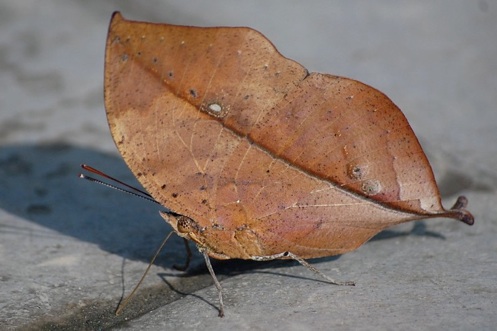Selection

Natural Advantage

We’ve all heard of Darwin’s theory of natural selection, but how does it fit into the understanding we’ve built of how populations evolve? It’s actually quite simple. If a particular trait is advantageous-specifically if it leads to a higher probability to create offspring (otherwise known as fitness) the probability for the fraction of the population with that trait to grow is higher than the probability for it to shrink. This is analogous to giving your walkers biased coins that will land on heads a greater percentage of the time than tails. This will lead to a shift to the right in the mean value of your distribution with time (the magnitude of this shift will be proportional to the time) and a greater probability of fixation, which is how a large population can end up acquiring an advantageous trait like the camouflage the of the dead leaf butterfly by fixation of a mutation.
The dead leaf butterfly, an example of natural selection at work. Photo credit: http://conservationreport.com/2008/11/08/can-you-see-me-animal-camouflage-leaf-mimics/
An animation of the random walkers’ positions with biased coins (analogous to selection for the trait being tracked).